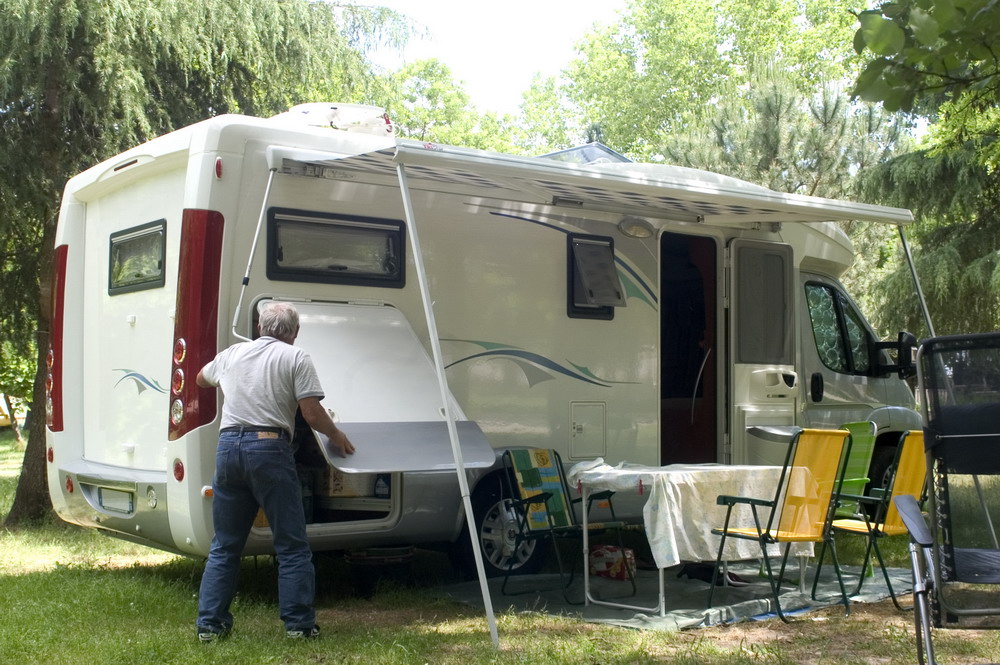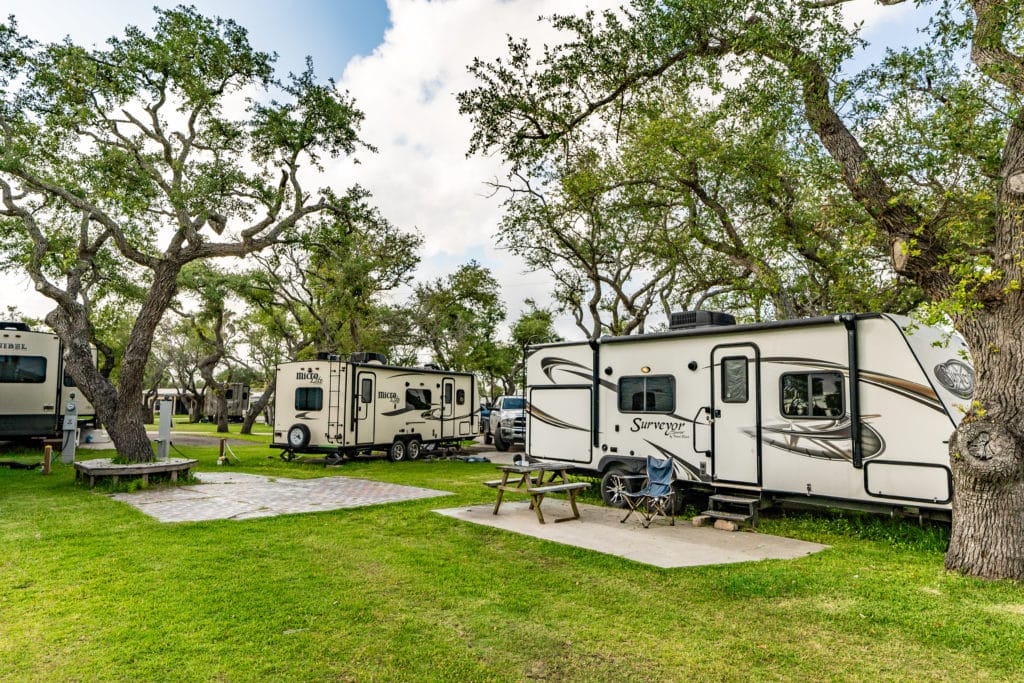Can an RV’s Gray and Black Water Tanks Freeze?

Motorhome and RV owners looking to do some winter camping for the first time have plenty of questions. One of the more common questions they ask RV service centers is whether or not their gray and black water tanks can freeze. In a word, yes. It really depends on where the tanks are located, whether or not they are heated, and how long temperatures will be below freezing.
AirSkirts, a Connecticut company that sells inflatable RV and trailer skirts, encourages owners to take the necessary precautions to prevent frozen tanks. Although tank freezing is less of a problem these days, it still happens from time to time. And when it does, repairs are expensive.
Tank Location Matters
Gray and black water tanks can be located above or below the floor. In the case of the former, freezing is pretty much unheard of. The heat contained inside the RV or motorhome is enough to prevent it. In terms of the latter, freezing is a real possibility.
Tanks located under the floor are exposed to the environment. That means they are also exposed to cold air. If unprotected tanks are subjected to below freezing temperatures for more than an hour or so, they could freeze. This could lead to burst pipes, broken seals, and even cracks in the tanks themselves.
Options for Protecting the Tanks
RV owners do not need to be so afraid of frozen tanks that they skip winter camping. There are lots of effective ways to protect black and gray water tanks. There is no need to allow the threat of freezing to dissuade you from enjoying the RVing lifestyle year-round.
Here are just some of the options:
- Tank Heaters – Tank heaters provide just enough heat to keep tanks from freezing. Obviously, larger tanks require more robust heaters. The downside to heaters is their maintenance. You have to keep up on it.
- Insulation – Unless you are planning to camp in especially harsh conditions, regular insulation may be enough to prevent freezing. You just wrap your tanks and leave it at that. The downside is potentially having to replace insulation every season.
- RV Skirting – Another option is to deploy RV skirting whenever the temperatures drop. There are different types of skirting, ranging from AirSkirts’ inflatable solution to heavy pieces of plastic or canvas that hang from the sides of the unit. Skirting acts as an insulator against cold air.
- Antifreeze – You can purchase an antifreeze chemical to use in both tanks. If you choose this method, be sure to use only a non-toxic solution. Note that you will have to refresh the antifreeze after every system dump.
Is there any one solution that works best? No. Tank heaters require regular maintenance. Insulation has to be replaced every now and again. RV skirting can only be used when parked; it’s useless when you’re driving. In reality, the best solution is to employ all four strategies.
Damage Can Be Extensive
It is really important to pay attention to your holding tanks and pipes whenever your motorhome or RV is exposed to cold weather. If you are storing your unit for the winter, flushing the systems and then partially filling tanks with antifreeze is generally enough. If you plan to travel, you will need to take extra steps.
Remember that any damage caused by frozen tanks could be quite extensive. Furthermore, your RV insurance will likely not cover it. Any amount of money you invest in preventing frozen tanks will probably pale in comparison to the amount of money you would spend repairing or replacing a damaged system.
Learn about the best awning mildew remover to clean your RV awning and keep it looking new. This guide provides detailed instructions for cleaning your awnings to prevent damage.












